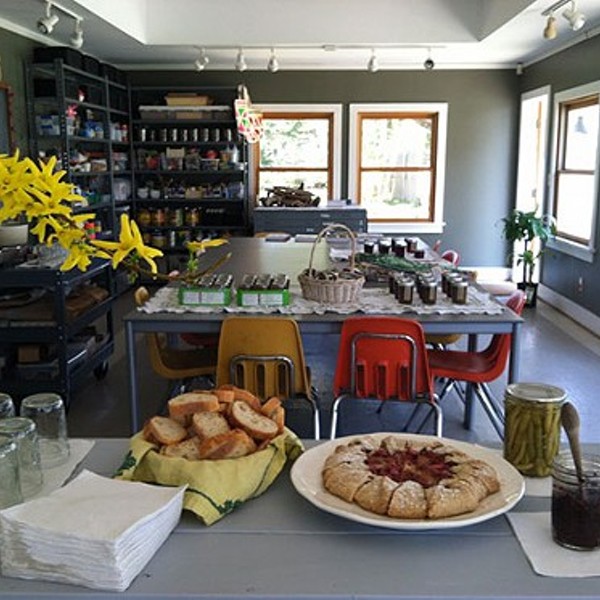But I won’t be like the Shcherbatskys and insist you do it my way. By all means, add commercial pectin if you prefer, especially since you can now find purer, even organic, pectins on the market, and some don’t even require sugar at all. If you use these, follow the recipes and directions that come with them, which stipulate the amounts you need for optimum results.
If you choose to proceed the old-fashioned way, without added pectin, be aware that some fruits are higher in natural pectin than others, and are more likely to turn out well. These include berries, sour cherries, apples, and citrus. Unripe fruit is higher in pectin than fully ripe fruit, so when you pick or select fruit, try to include some that isn’t fully ripe.
How to tell if your cooking fruit has jelled? Princess S. said you’ll know it has if it leaves a “tail” when poured from a spoon. We call this “sheeting.” When you dip a metal spoon into the jam or jelly, and let it drip off, the droplets that fall from either side of the spoon will coalesce in the middle and form a sheet. Another method is to periodically put a dab of the cooking liquid on a plate, where it can cool quickly, and you can assess its texture at room temperature (jam thickens as it cools).
Sterilizing and sealing
The origin of fruit preserves lies in the discovery that cooking fruit in sugar is a way to stave off rot and keep it edible for months, even years, past the time it came off the tree or vine. That both the sugar and the fruit are transformed into something wonderfully greater than their individual selves is a bonus. While the sugar and the acid both help to make the fruit inhospitable to harmful microorganisms, you need to take some additional measures to fend off spoilage if you’re keeping the preserves for any significant period of time. First, you must sterilize the jars (and their lids) into which you’ll pour the jam or jelly by covering them with water and bringing it to a boil. Leave jars and lids in the hot water until they are needed.
To keep it for more than a couple of weeks longer, you’ll need to take further measures. You can simply put the filled jars in the refrigerator and rely on the cold to keep them. (I was surprised to read in Anna Karenina that Agafya was used to keeping her stuff on ice, which seems to have been available in Russia even into the summer.) This is a good solution if you make a smallish batch of preserves and/or have lots of room in your refrigerator. In fact, making only small amounts of jam or jelly is a good solution for reducing the general level of effort entailed in a somewhat arduous process. After all, unlike our forebears, most of us are not relying on our own jam to provide us with food through the winter. And in these carbophobic times, you may not want huge quantities around.
If, however, you’re looking forward to stocking your pantry, or just don’t want to crowd your fridge, you need to provide some kind of air-tight barrier to protect the surface of the fruit from contamination while it sits at room temperature. The old-fashioned way is to pour a layer of paraffin onto the surface of the fruit. Or, as Princess S. instructed Agafya, if you place a piece of rum-soaked paper on top of the jam, you can do without ice. Today, there are special canning-jar lids that automatically form a vacuum seal as the contents of the jar cool. I prefer these; I like to hear the tops go ping! when the seal is formed. Follow the directions on the package.
Whatever your choices—added pectin or not, refrigerator or pantry, paraffin or pop-top lids—you will not regret making your own jam. So do not be deterred by Agafya’s resentment, Meg’s tears, or Emma’s fatal discovery. It may take some effort, but it will be worth it. And when you open those jars on a cold, gray, winter day, you will be transported back to that summer afternoon you made it, with all of its colors, tastes, and smells, and the satisfaction of a job well done.













